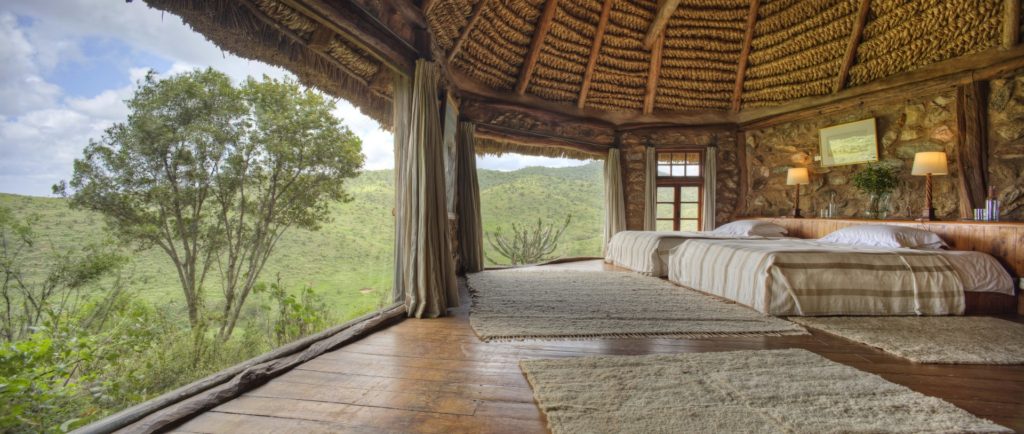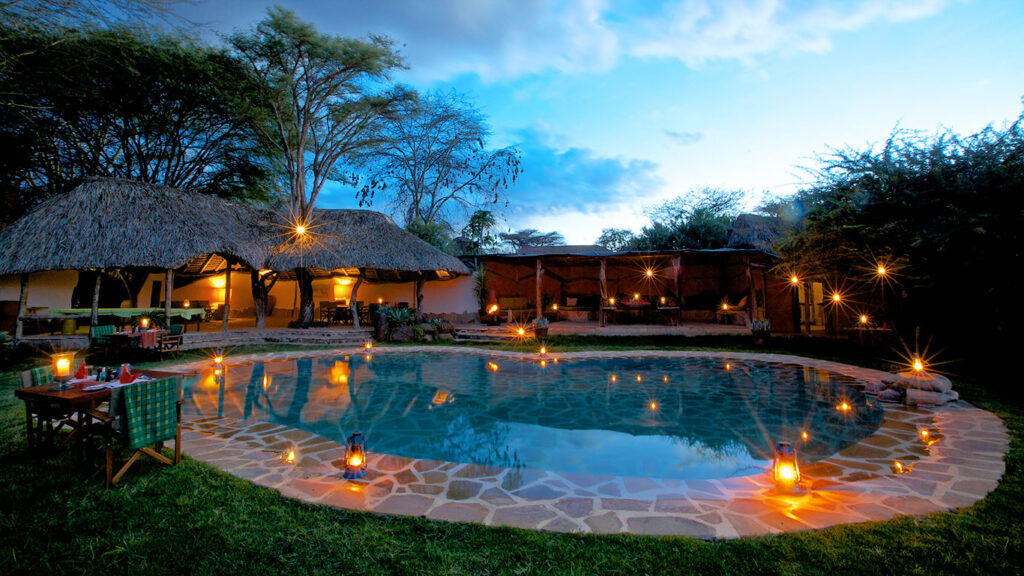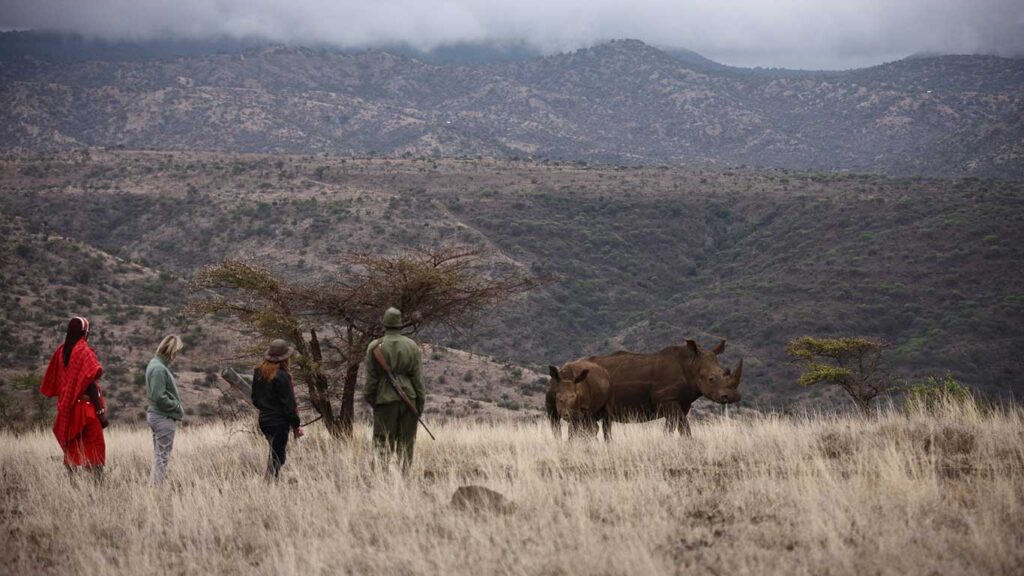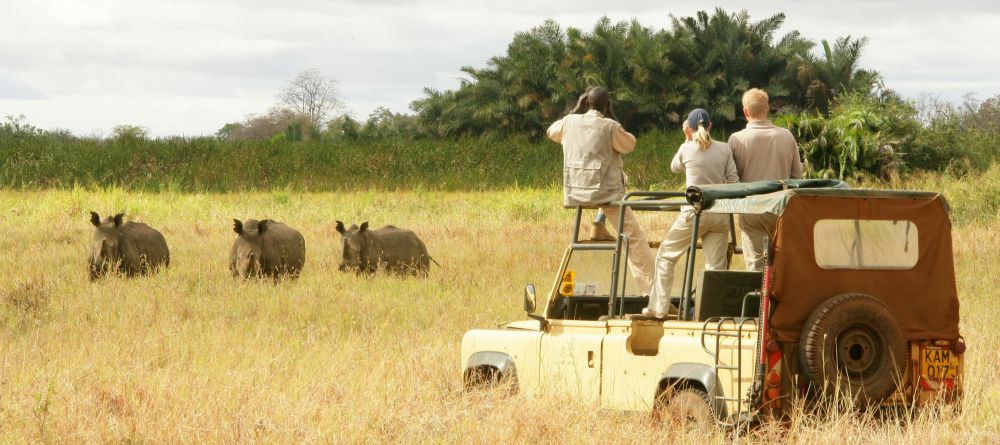Lewa Wildlife Conservancy is situated within a 62,000-acre ranch and wildlife sanctuary provides safe refuge to over 12% of Kenya’s entire black rhino population and about 14% of their white rhino population, making it the perfect choice for your next Kenya safari if you want to see the big 5, namely rhinos, lions, leopards, elephants and buffalo all of which make their home at the Lewa Wildlife Conservancy.
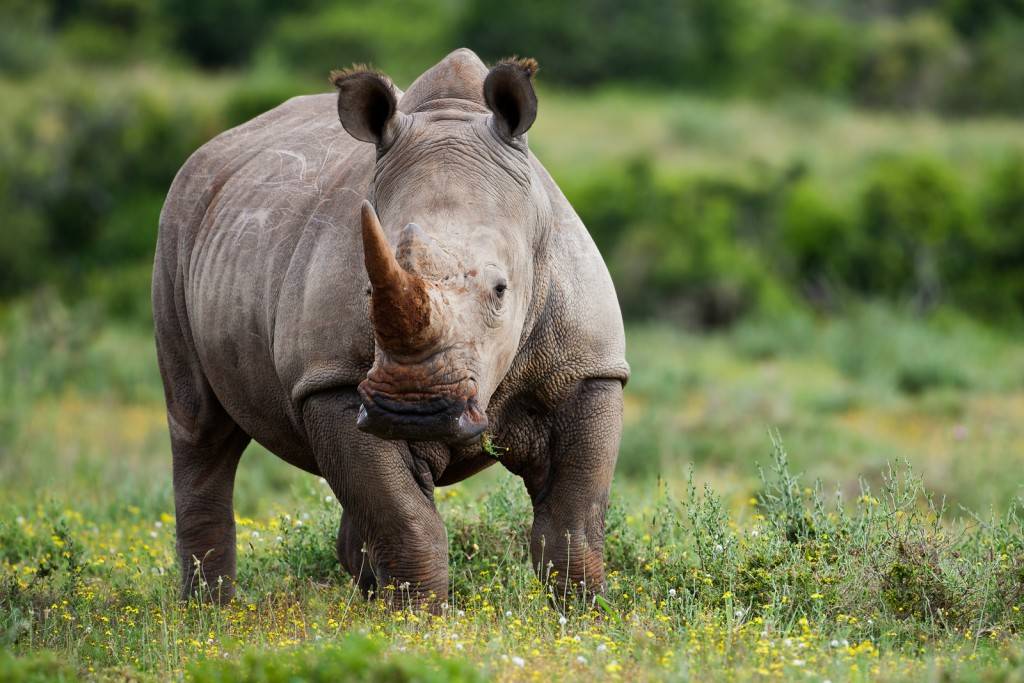
Lewa Wildlife Conservancy started out with an initial population of 15 black rhino in 1984 which over time has consistently expanded to a whopping 169 individual. The population growth has enabled translocations of some rhinos to other key sites (including Borana and Sera Conservancies). The resident Kenya Wildlife Service (KWS) vet assists with translocations and is also responsible for treating injured and sick animals, conducting wildlife rescues and helping to alleviate human-wildlife conflict. Due to the constant threat of poaching the rhino populations (and other wildlife) are heavily guarded using electric fencing, assault rifles, and the perimeter is monitored daily by armed field rangers. An armed response team, assisted by sniffer dogs, is also made available to nearby conservancies (including the Northern Rangelands Trust) and the KWS, as are the radio room and Joint Operations Centre.
The Lewa Wildlife Conservancy, in addition to being home to the Big Five, is also a sanctuary for a diverse array of wildlife. It supports a myriad of plains game species all perfectly adapted for the semi-desert environment and Grevy’s Zebra and the Reticulated Giraffe are common. Additionally, the lance-like horned Beisa Oryx and the rare Greater Kudu are seasonal visitors and the Guenther’s Dikdik, the giraffe-necked Gerenuk and the beautiful blue-legged Somali Ostrich are resident all year round.
Notably, Lewa Wildlife Conservancy is where Prince William proposed to his girlfriend Kate Middleton. Prince William is a keen conservationist and has visited the area on numerous occasions and therefore it seemed the natural choice for him when it came to choosing the ideal location for his marriage proposal. You too can follow suit and propose to your girlfriend (See: Our Honeymoon Holidays visiting Lewa Wildlife conservancy)
The Lewa swamp has become a sanctuary in itself for the rare and fascinating semi-aquatic Sitatunga Antelope and its primary predator, the Leopard. Birdlife is equally rich with numerous species of Bustard, Plover, Coursers and birds of prey. At night, leopards are frequently encountered along with bush-babies, aardvarks, bat-eared foxes, caracal and various mongooses, genets and civets – given all this a few days in Lewa will give you a unique combination of hospitality, spectacular scenery and abundant wildlife.
Travellers that choose to visit & stay at Lewa Conservancy make a valuable contribution to the programs run on the conservancy, as a portion of all proceeds from tourism is dedicated to both flora-fauna preservation and public development. Through its conservation tourism, Lewa also supports community projects to enhance the lives of local peoples, including four medical clinics, over a dozen schools, women’s micro-credit program and ten water projects.
Things to see & do while at Lewa
There are many activities within Lewa, from those based in the camps to horse riding, camel riding, and hot air balloon trips at dawn. Most camps will also offer walking safaris, night drives, bush breakfasts, and sundowners in magical spots. Further afield, there are also waterfalls and walking in Ngare Ngare forest.
Cultural visits to local Maasai villages are also available. These are fascinating and enable you to see how the tribes live – you’ll usually be greeted with a welcome ceremony including a dance (participation is often encouraged). Although it can feel a touch voyeuristic, the villagers enjoy showing off their homes and the visits provide much-needed income for them, so please remember to tip well and purchase souvenirs.
Best time to visit the Lewa conservancy
Traditionally, the best times to visit Lewa Conservancy is from June to September, and again from December to March. However, with climate change, the seasons have shifted and are less reliable so as long as the camps are open, there is likely to be good viewing.
Most of the year is dry season, when conditions are best for safari and sightings are more common due to wildlife gathering around water sources. However, the rains bring an extraordinary transformation in the landscape, when the arid, brown grasses burst with greens and colour. Most Kenyans – and most of the animals – are delighted when the rains finally arrive.
The unpredictable weather patterns during the main wet season are from April to June. This means that excursions might be cancelled at the last minute. The ‘short rains’ which occur between October and December can sometimes disrupt a safari, but generally are short and only last a few hours.
Learn more about When to visit Kenya
Where to stay while at Lewa Conservancy
We’ve selected a range of accommodation options for when you visit Lewa Wildlife Conservancy. Our choices usually come recommended for their character, facilities and service or location. Our specialists always aim to suggest properties that match your preferences. If you have something particular you prefer, simply let us know and we will check it out, make our recommendation and finally book it if you like.
How to get to the Lewa conservancy
Lewa Conservancy (also known as the Lewa Downs) is in Meru County. Just north of the equator, it qualifies as being in North Kenya even though it’s actually in the centre of the country. Lewa is a 4-hour drive north of Nairobi. Although it’s easily accessible by road, most people choose to fly.
Direct flights run from Wilson Airport in Nairobi to the airstrip in Lewa, where it’s usually no more than 30-45 mins to your camp (with game viewing en-route).
SafariLink and AirKenya are the primary domestic flight operators. They run a reliable network connecting most of Kenya and will enable you to get to your onward destinations such as the coast.

